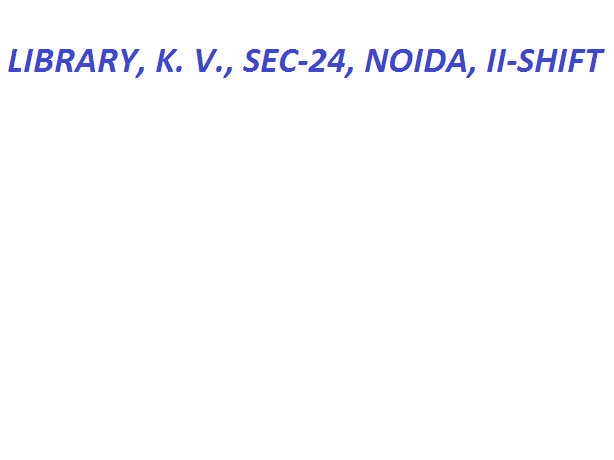LIBRARY LAWS
S R RANGANTHAN’S FIVE LAWS OF LIBRARY SCIENCE
First law: Books are for use
Ranganathan observed that books were often chained to prevent their removal and that the emphasis was on storage and preservation rather than use. He did not reject the notion that preservation and storage were important, but he asserted that the purpose of such activities was to promote the use of them. Without the use of materials, there is little use of the item. By emphasizing use, Ranganathan refocused the attention of the field to access-related issues, such as the library’s location, loan policies, hours and days of operation, such mundanities as library furniture and the quality of staffing.
Second Law: Every reader his or her book
This law suggests that every member of the community should be able to obtain materials needed. Ranganathan felt that all individuals from all social environments were entitled to library service, and that the basis of library use was education, to which all were entitled. These entitlements were not without some important obligations for both libraries/librarians and library patrons. Librarians should have excellent first-hand knowledge of the people to be served that collections should meet the special interests of the community and that libraries should promote and advertise their services extensively to attract a wide range of users.
Third Law: Every book its reader
This principle is closely related to the second law but it focuses on the item itself, suggesting that each item in a library has an individual or individuals who would find that item useful. Ranganathan argued that the library could devise many methods to ensure that each item finds it appropriate reader. One method involved the basic rules for access to the collection, most notably the need for open shelving.
Fourth Law: Save the time of the reader
This law is a recognition that part of the excellence of library service is its ability to meet the needs of the library user efficiently. To this end, Ranganathan recommended the use of appropriate business methods to improve library management. He observed that centralizing the library collection in one location provided distinct advantages. He also noted that excellent staff would not only include those who possess strong reference skills, but also strong technical skills in cataloging, cross-referencing, ordering, accessioning, and the circulation of materials.
Fifth Law: The library is a growing organism
This law focused more on the need for internal change than on changes in the environment itself. He argued that library organizations must accommodate growth in staff, the physical collection, and patron use. This involved growth in the physical building, reading areas, shelving, and in space for the catalog.

No comments:
Post a Comment